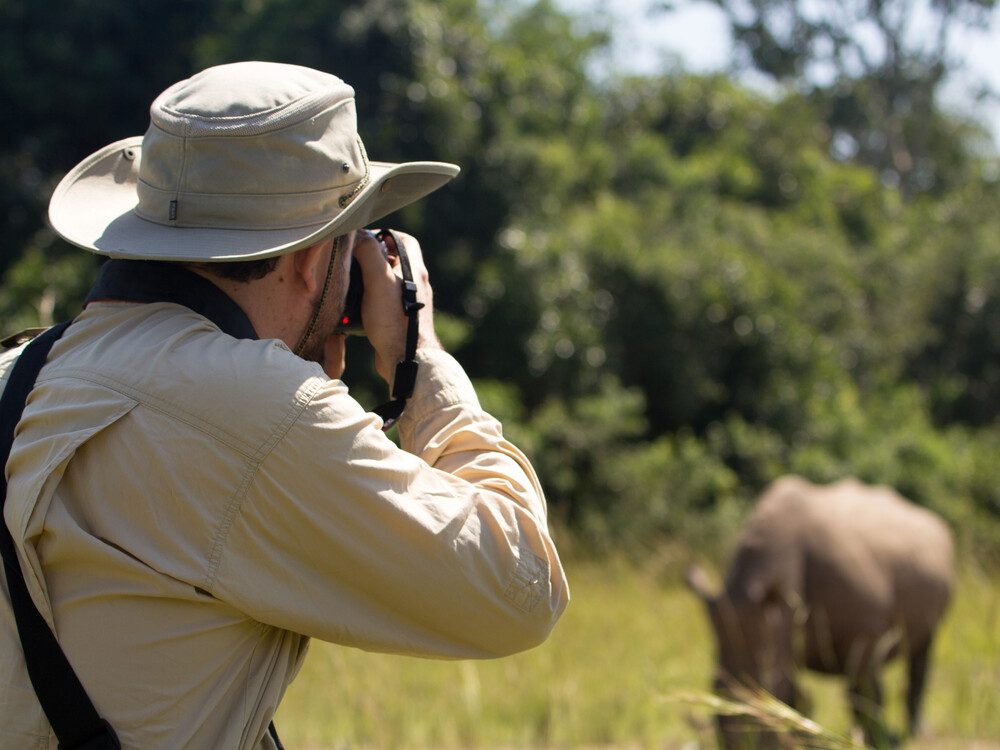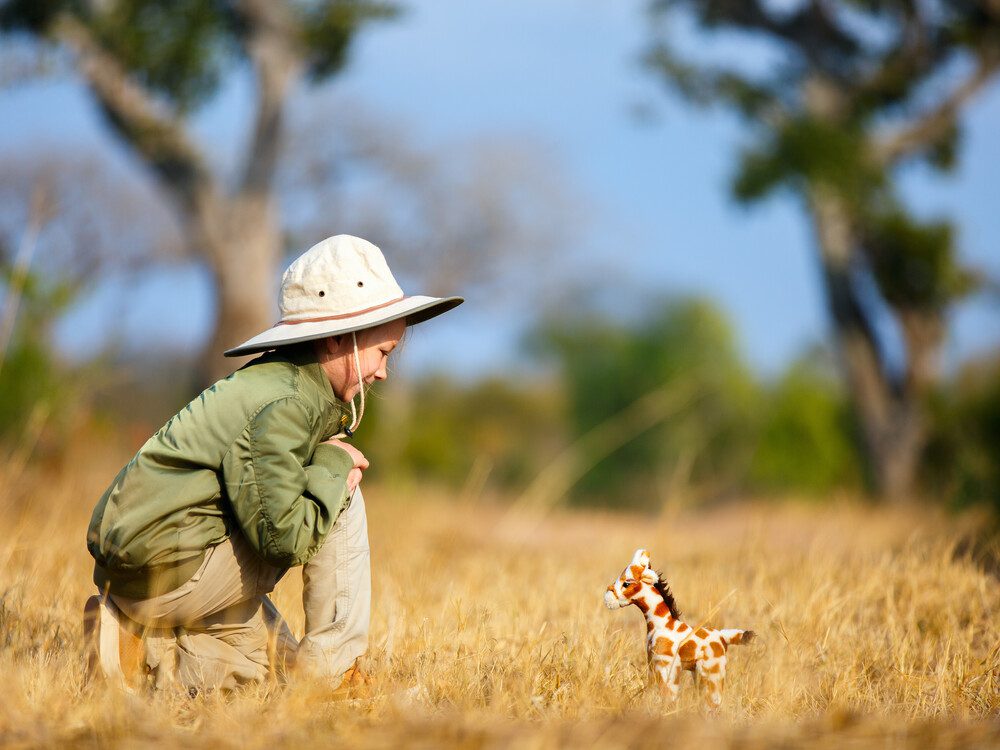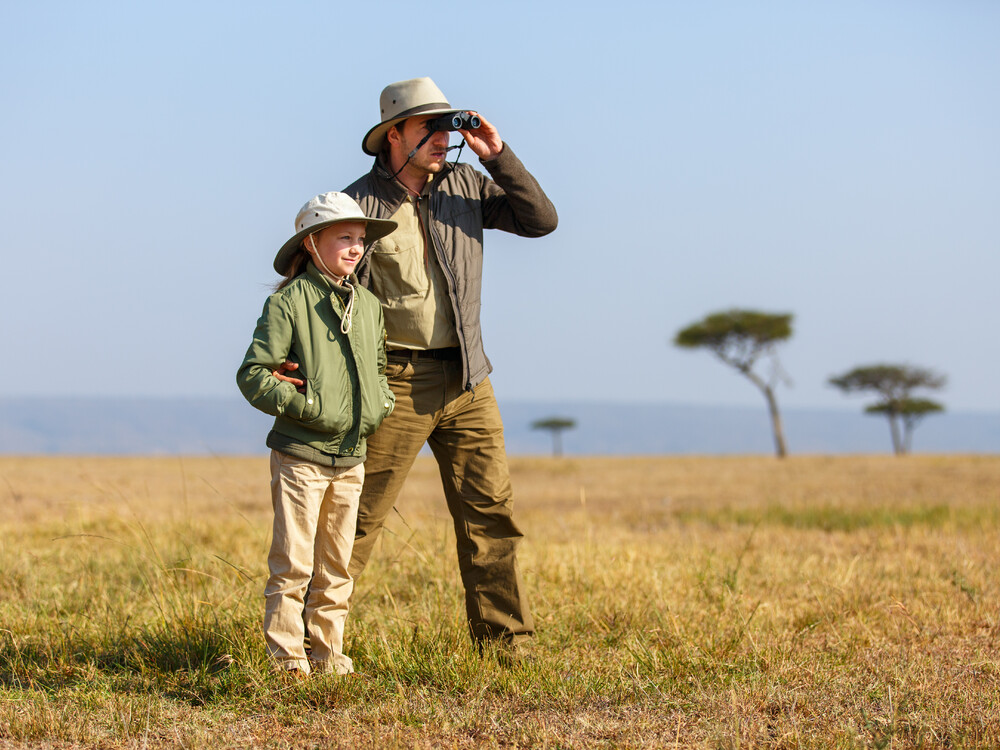What to wear on Tanzania safari?
What to wear on Tanzania safari?
Planning a trip of a lifetime to East Africa and wondering what to wear on safari in Tanzania? We’ve got you covered!
Tanzania is a top safari destinations in Africa. Its landscapes are breathtaking. There is an abundance of wildlife and luxury lodges. Tanzania offers something for everyone.
Whether you’re looking for a family trip, a romantic getaway, an outdoor adventure, or an educational safari, there’s something for you.

Tanzania weather
Tanzania has a mostly tropical climate, but the weather varies significantly depending on altitude and other factors. The coastal areas are the most humid and hot, while the western and southern parks are hot but less humid. The rest of the country is generally milder, and temperatures drop significantly at night.
From June-October, There is very little rainfall during this period and humidity are very low. At night it gets cooler. Remember to pack warm clothes, as morning game drives in open safari vehicles can be chilly, particularly in northern parks.
From June to October, afternoon temperatures typically range from 20°C/68°F to 30°C/86°F. However, this may vary depending on altitude and location. On most days, the sky is clear and the weather is sunny.
The Wet season in most parts of the country runs from November to May, with average temperatures of 30°C/86°F. However, temperatures drop significantly at higher elevations, such as 1,300m/4,265ft or more. Early mornings in northern parks can also be chilly due to their higher elevation.
The ‘Short rains’ occur sometime between November and December, typically lasting around a month. It is unpredictable, and in Northern Tanzania, it can even occur in October. However, it usually will not disrupt safaris.
The rainy season usually stops in the northern parks and coastal areas during January and February. This break in the rain does not usually happen in the other parks.
The “Long Rains” occur from March to May. This period is known for its high levels of rainfall. It usually rains heavily during these months. However, it does not rain all day. The humidity is greater in the hotter regions of the south and west.

What Clothes Should You Pack for a Safari in Tanzania?
When going on a safari, it is important to be prepared by bringing the necessary items. Wear light colors that will help you blend in with nature, such as khaki, green, beige, and brown. Ensure you don’t overload your bag, but don’t forget to bring the essentials of safari clothing.
- Sufficient amount of socks and underwear
- Light, long-sleeved shirts (linen and cotton)
- Warm, windproof jackets
- Sweaters and beanies
- Jeans and warm pants
- Dresses or shorts
- Broad-rimmed hats and sunglasses
- Waterproof boots
- Raincoats
- comfortable clothes and sandals
- Swimming costume
- Warm and cool pajamas
- Backpack or fanny pack
- Sarong or kikoi
- Avoid wearing blue or black clothing. Tsetse flies are attracted to these colors. Their bite can cause African Sleeping Sickness
- When planning a walking or cycling safari, it’s important to dress appropriately. Wear comfortable walking shoes that are easy to put on and take off or hiking boots for Mountain Climbing.

What to Wear in Zanzibar
- Pack clothes made from natural fabrics such as linen, silk, bamboo, and cotton. These fabrics are lightweight and loose-fitting. They are also easy to wash and dry. This makes them ideal for hot and humid weather, as they help you stay cool.
- It is important to wear sunscreen, sunglasses, and wide-brimmed hats to protect yourself from the sun’s strong rays. We recommend the Riemann P20 range for 10-hour protection.
- When exploring the reefs in shallow waters, be aware of the sun’s reflection off the water as it can cause sunburn.
- When visiting the beach, be cautious of jellyfish and sea urchins and wear dive shoes to protect your feet.
- Pack light with Lindsay Phillips Switch Flops. These shoes are a range of interchangeable flip-flops with snap-on decorations. With them, you can change your style from day to evening in an instant.
- When you are in towns and villages, avoid dressing like a tourist. Your shoulders should be covered and your knee length should also be covered. (For women)
- Hot weather can be uncomfortable. Wearing a skirt or baggy pants is a great way to stay cool. Additionally, it can act as a shield for your knees from the sun’s rays. (For women)
- A pashmina or sarong is a very useful item. It can be used to cover up, block out the sun, or make a simple outfit look more attractive. (For women)
- At hotel resorts on the beach, things are more relaxed. Bikinis are allowed, but thongs are not. Going topless is illegal.
- A light scarf or sarong to cover up your shoulders or wrap around your waist. A pair of shorts or a skirt for cooler evenings. A bathing suit or swimsuit for swimming in the ocean or pool. Comfortable shoes for walking on the beach

Extra Items to pack on tanzania safari
When planning a safari in Tanzania, it’s important to bring more than just clothes.
- Camera, extra memory cards, batteries, and charger, if applicable
- Cellphone
- Memory cards
- Chargers for all electronics
- Binoculars
- Headlamp or flashlight
- Country-specific adaptor plugs
- insect repellent
- Visa
- Passport
- Identity document
- Emergency contact numbers
- Lodge contact numbers
- Medical certificates
- Maps and guidebooks
- Plane tickets
- Travel Insurance Policy
- Tissue paper and a small travel towel
- Ziplock bags for toiletries, camera equipment, snacks, and so on
- Personal toiletries
Small first aid medical kit contains the following items:
– Tylenol
– Antimalaria pills
– Cold and allergy medicine
– Itch medication
– Band-aids
– Stomach ache remedy
– Antibiotic cream
– Diarrhea medicine
– Prescription antibiotic for travelers diarrhea
– Any prescription medications


